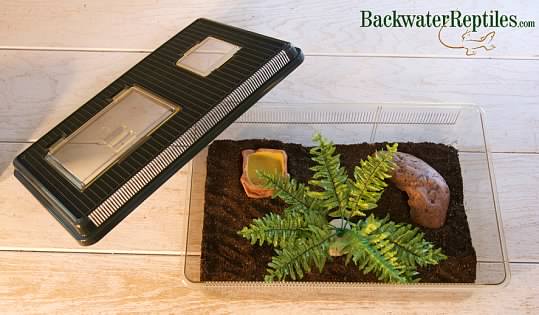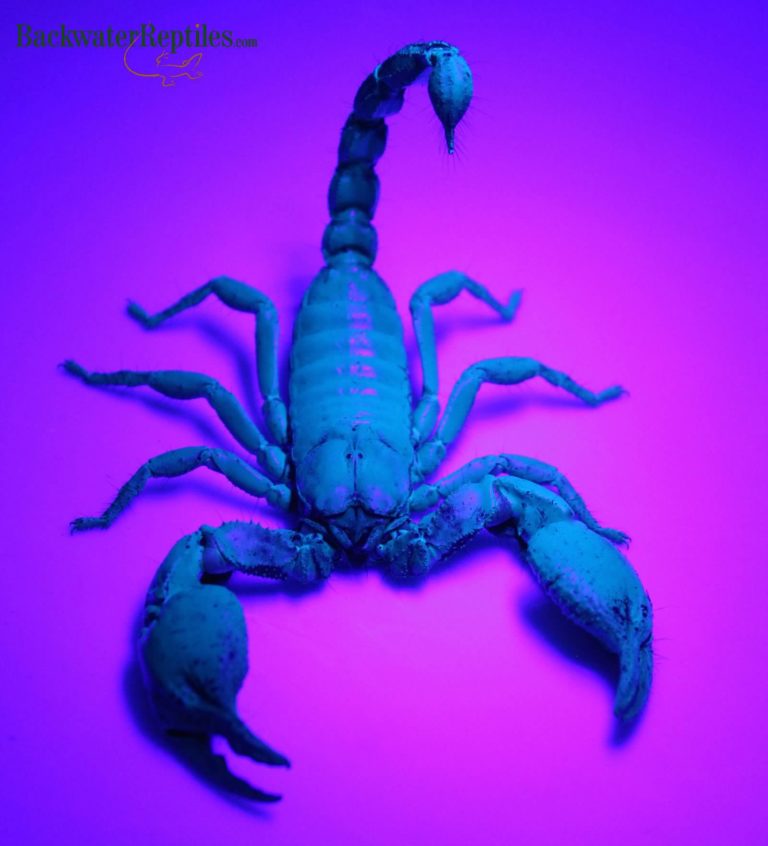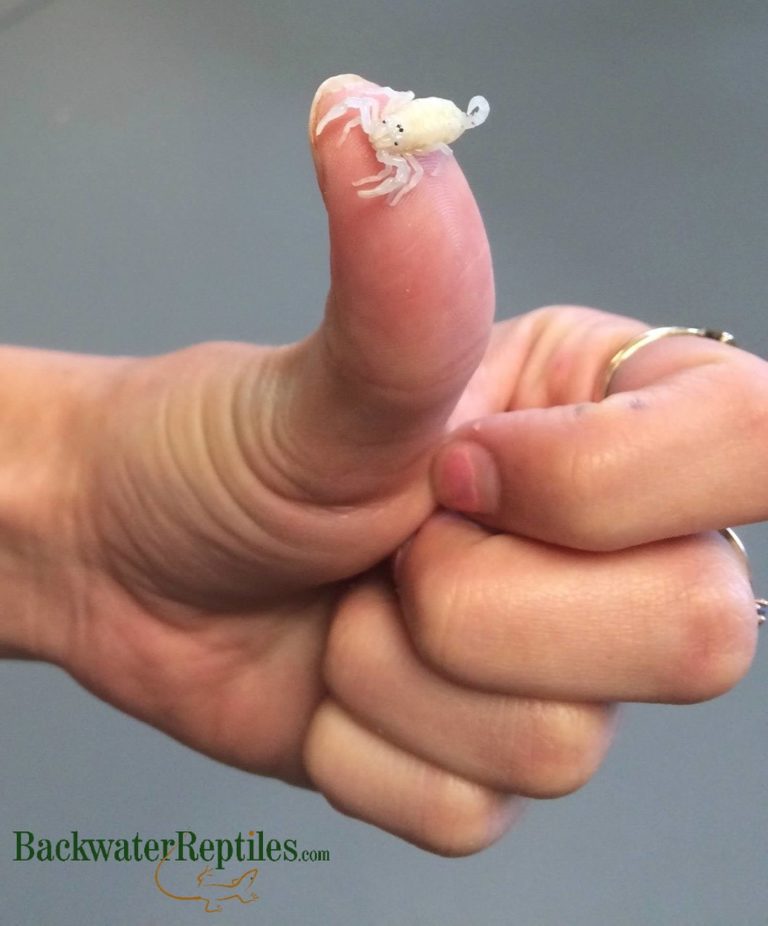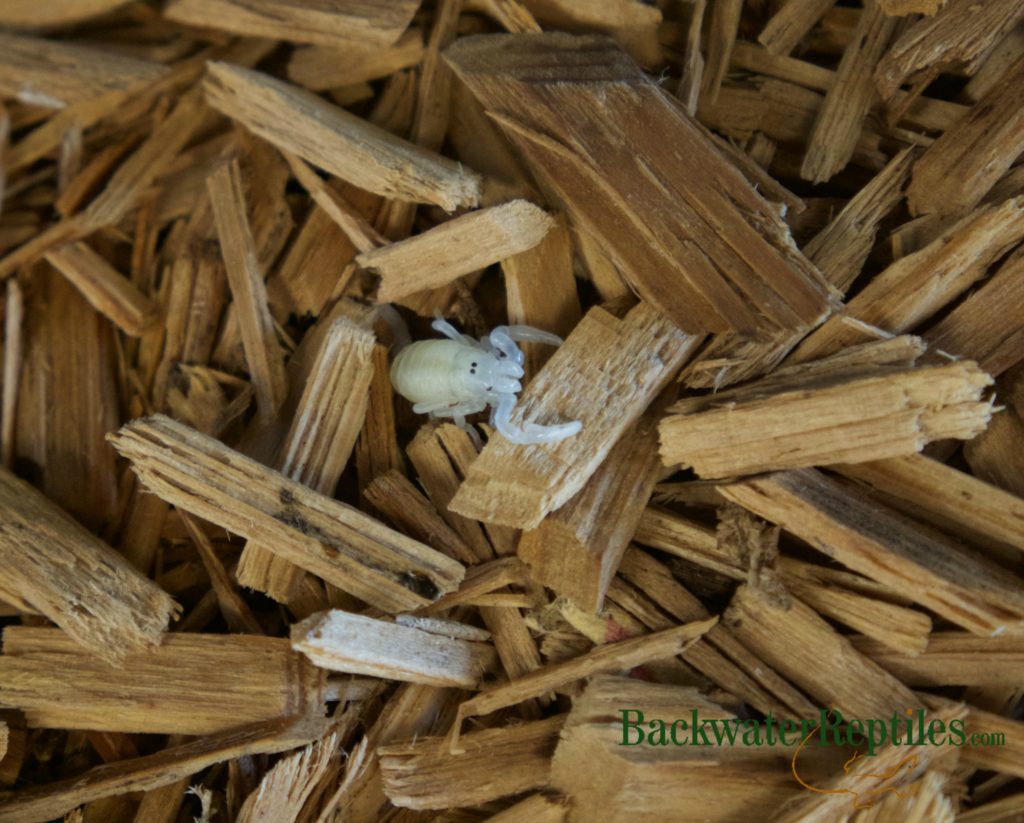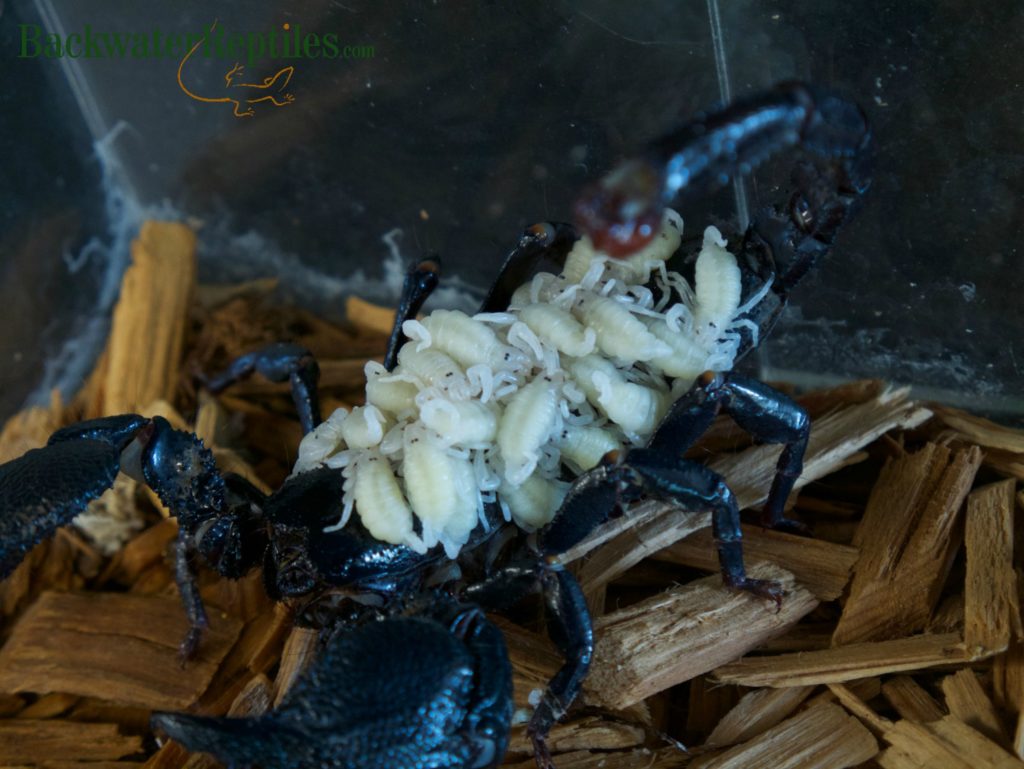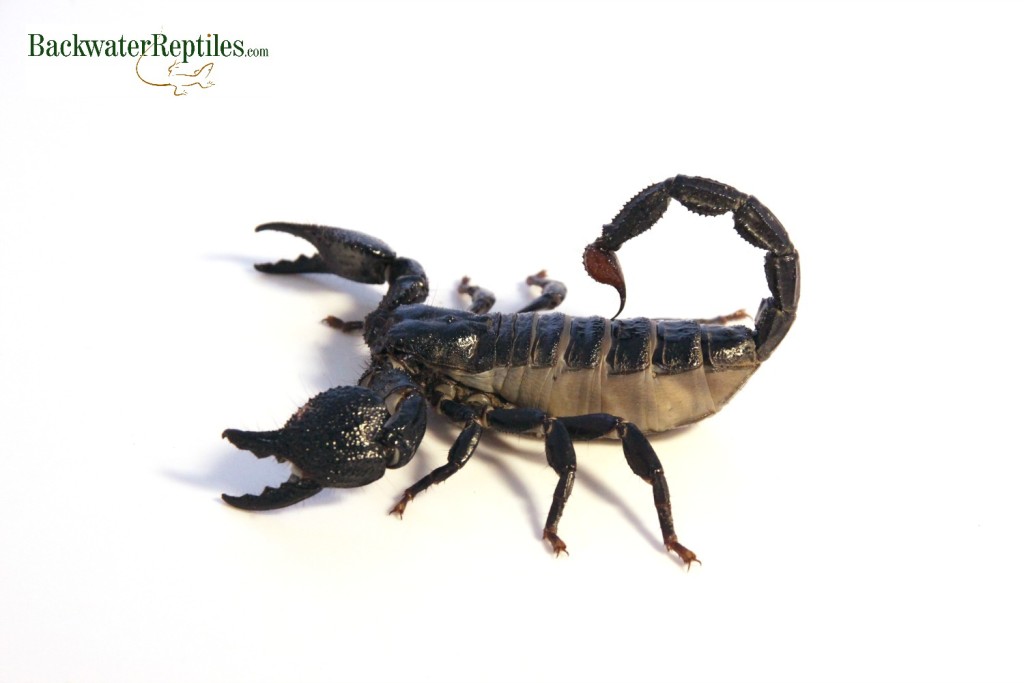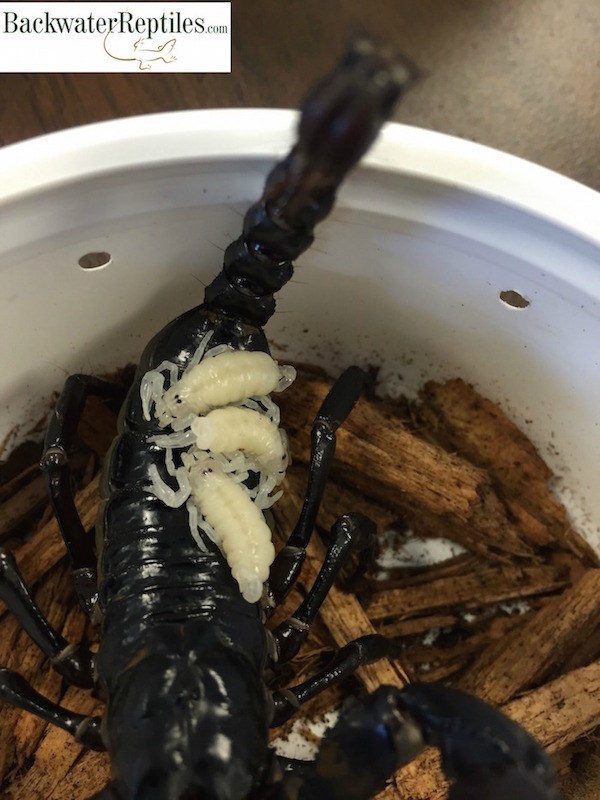What do scorpions eat? How long do scorpions live? How big do scorpions get?
Many people who are unfamiliar with scorpions might have questions about this interesting invertebrate, regardless of whether or not they want to keep one as a pet. In this article, we will answer basic questions that may or may not have basic answers in regards to scorpions.

Do scorpions make good pets?
The shortest answer we have for this question is – yes! However, scorpions are only good pets if you want a pet that is mainly for display. Obviously, experienced owners do handle their scorpions, but for most people, scorpions simply stay in their enclosure most of the time.
It’s quite obvious that scorpions have an amazing defense mechanism in the form of a stinging tail and so we typically recommend that people only handle scorpions when necessary. In fact, we even have an entire separate blog article dedicated to that specific task.
Many people also enjoy pet scorpions because they are easy to maintain. They need a water dish, a cage cleaning every now and then and food…and that’s basically all they need to thrive.
So, if you’re in the market for a pet that is not cuddly, is easy to care for and requires very little in the maintenance department, a scorpion might just be a good match for you and your household.
What do scorpions eat?
Scorpions are opportunists and will eat many different types of things in the wild. Larger species will even eat small rodents, other scorpions and spiders!
In captivity, pet scorpions will eat virtually any type of insect. Many are fond of crickets and roaches, but worms of many types are also good treats. If you’re lucky enough to have a scorpion that is large enough, such as a fully grown Dictator or fully grown Emperor scorpion, you can even offer an occasional pinkie mouse as a treat.
Because scorpions are most active at night, we advise feeding at night. It’s as easy as offering a worm using tongs or tweezers. You can also toss a cricket or two into the enclosure while the scorpion is not hiding and watch the fun ensue.
Keep in mind that scorpions have slow metabolisms so they don’t need to eat as frequently as mammals do. Young or baby scorpions should be offered food daily, although don’t be surprised if it’s not eaten every day. Adult scorpions really only need to eat every other day or so.

How long do scorpions live?
Honestly, the lifespan of a scorpion will depend upon what species you own. Just like all types of animals, different species of scorpion will have different life spans.
Scorpions are born as tiny versions of their adult selves. They don’t undergo metamorphosis prior to becoming fully grown. They will however molt several times in order to reach maturity. This process can take between one to three years, depending upon the species.
Once a scorpion reaches maturity, it can live for another one to three years. Again, the time frame is highly dependent upon the species.
Ultimately, for an arthropod, scorpions do live pretty long lives. In general, they typically live an average of five years, although there are some that can live between ten to fifteen years!

How big do scorpions get?
Here’s another question where the answer will vary based upon the species. For instance, Dictator, Emperor and Asian Forest scorpions all grow relatively large. On the other hand, many of the species that belong to the taxonomic family Buthidae tend to be quite small.
The average scorpion size is six centimeters, or just over two inches. Some are much smaller and some are much larger. If you are interested in a particular species as a pet, we advise researching that species’ size at maturity prior to purchasing so that you can be sure you are buying the correct size enclosure.
Where do scorpions live?
Scorpions can be found the world over in different environments including the desert and even semi-urban areas. In fact, exterminators are actually trained to handle removing scorpions from homes because in some areas they are considered dangerous pests.
Typically, scorpions can be found living solitarily underneath rocks, bark, wood and other objects that sit upon the ground. They like to feel hidden and safe during the day and emerge after the sun goes down to find food.
If you live in an area where scorpions are commonly found indoors (such as Arizona in the U.S.), they will likely take refuge in firewood, under boards or in bathrooms. They can also be partial to cupboards and pantries since they are dark and have objects to hide behind and underneath.

Are scorpions dangerous?
Most species of scorpion are not lethal to humans. However, all scorpions have tail stingers that are venomous and they can bite. More often than not, these bites and stings will only cause localized pain at the site of the injury, but that can be vastly different if you happen to have an allergy to scorpion venom. Children and older adults are the most at risk.
Most of the species that people commonly keep as pets are larger and tend to be slower to sting. They usually have more docile dispositions as well.
Interestingly enough, it tends to be true that the smaller the scorpion species, the more venomous it is. And the species that have larger pincer claws such as Emperor scorpions and Asian Forest scorpions tend to have less potent stings.
So, yes, theoretically all scorpions are dangerous. But the commonly kept pet species are not lethal to people unless you happen to have an allergy. People who have been stung by their pet scorpions have compared the pain and after effects as similar to a bee sting.
Where can I get a pet scorpion?
Some people are lucky enough to be able to step outside and collect a wild scorpion as a pet! But, we advise against this for multiple reasons.
Specialty pet stores often sell the more common scorpion species. And reptile expos and shows are also great places to acquire a pet scorpion. Both of these are great options because you can see the animal beforehand and get a feel for its personality.
Scorpions are also really resilient creatures and do very well with being shipped overnight to new homes. This means that you can safely order a pet scorpion online from Backwater Reptiles or another breeder of your choice.
Conclusion
While we don’t have all the questions you might possibly have about scorpions listed or discussed in this article, we do hope that we’ve covered the basics. We get a lot of queries about this invertebrate because people are interested in owning one, but want to do research prior to purchasing. And we are one hundred percent on board with that.
We hope that we’ve helped you gain a better understanding of this sometimes misunderstood creature. If you still have any questions that we didn’t cover in this article, let us know in the comments!
Don’t miss our other scorpion-related articles, including:
The most popular pet scorpions

